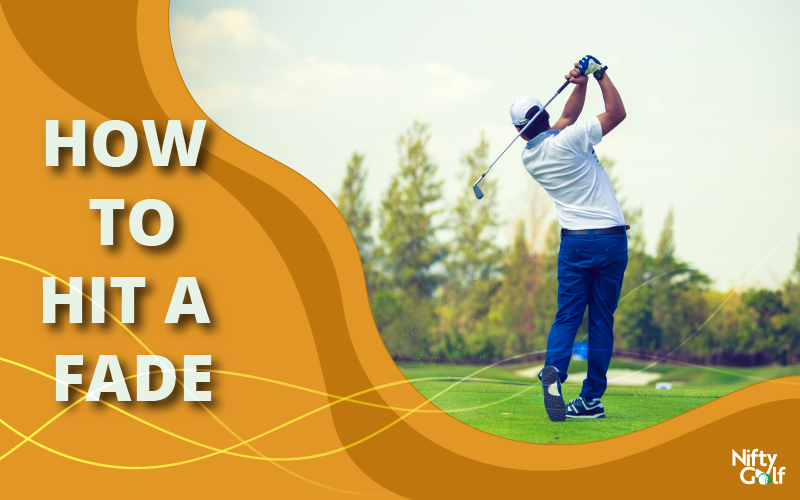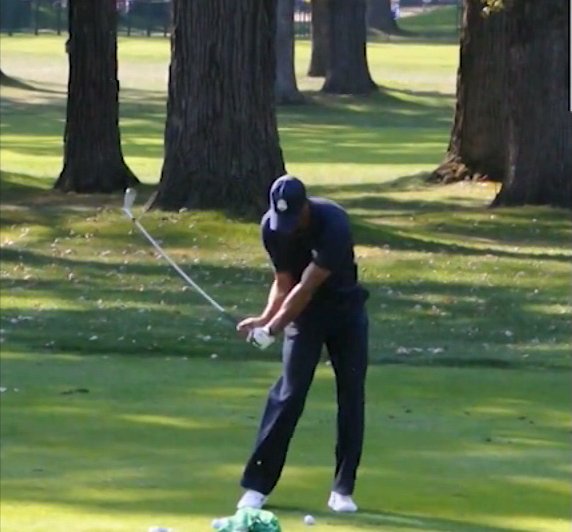

Control the Club Dynamics for Consistency In my opinion, a good way to play consistent golf is to try to have both of these variables fairly neutral. What is going to influence things is how different the swing path is to the face angle. We all hear how we “should” be swinging from the inside, but this isn’t necessarily true. Or more precisely, what is known as face to path. Not being sure if your ball will go out-of-bounds left or right makes golf and extremely unpleasant experience, believe me!
#Fade in golf driver#
Having been in the situation with my driver for a while, there is no worse feeling on the tee. This is when the fader sees his ball start left and keep going even further. Closing down the face can accentuate that left/right movement, or even worse, add in the opposite miss, the famous double-cross. Unfortunately, the science doesn’t actually work out this way. They believe that by closing the face and pointing it left, the ball will stay left. This is also how some will try to fix this fade. There are plenty of faders and slicers that will have the face somewhat closed and start the ball out on the left, knowing it will come back. This doesn’t mean that all faders have their face pointing right, far from it. If the face is pointing right, the ball will go right and vice versa. In general terms, face controls the starting direction of the ball. These are the direction that the face of the club is pointing and the path of the club itself. Ball flight and path is essentially controlled by just two things. In order to change this into a more neutral ball flight and maybe even a draw if you really want, it is important to understand exactly what makes the ball go in a certain direction. The result turns to be that the ball heads even further right! When we see the ball heading off to the right (for a right-handed golfer) the temptation is to aim further left. The thing about correcting a fade is that so many golfers go about it in exactly the opposite way and actually turn this fade into a slice.

That being said, I don’t think a weak swipe that floats off to the right is any way to play great golf either, so what can you do about it? That little five yard fall to the right into a green or round a tree or whatever is a hard shot for me to hit, when a few years ago it was my unthinking stock shot. And for many golfers, myself included, the occasional over draw hook is far more dangerous than my over fade ever was.Īs Lee Trevino said “you can talk to a slice, but a hook won’t listen.”įinally, I do actually find it quite hard to hit a fade now, even when I need to. It doesn’t automatically go further either, despite what you may have heard. What have I really gained here? A draw doesn’t magically work better than a fade. All well and good, you might say, but not so fast. I did eventually find my way to a draw and now my stock iron shot is a high draw. And if you have ever seen me putt, that is saying something! Should You Hit a Draw?

I worked hard on hitting this draw and the result was that my iron play became perhaps the worst part of my game for a while. However, much like most handicap golfers, I couldn’t get the idea that “good players hit a draw” out of my head. I played a nice fade with my irons and hit them very well. The result was he dropped out of the top echelon of players completely and has, in all honesty, perhaps never really made it back right to the top table consistently.Īs a far less-skilled golfer, I did something similar. Rumour has it that he decided to try to turn this gentle fade into a draw. He played a lovely controlled fade and rarely had blow up holes on the course. His iron player in particular was very solid.

He is still an absolutely fantastic golfer. Kaymer was one of the most consistent players on the world circuit a decade ago. Two examples of hugely different skill levels would be double Major champion Martin Kaymer and non double major champion….me! Let’s take Martin first because he probably deserves it! A lot of these golfers have lost their way trying to change a left to right ball flight for right to left. It isn’t necessarily a bad miss and many golfers have played some fantastic golf with a fade, all the way up to major winners. There is something that you might like to think about though before you get rid of that fade forever.
#Fade in golf how to#
No wonder that so many golfers are looking to learn how to correct a fade in golf and replace it with that draw. As a shot, it can also tend to lack power and leave the ball not only out of position or worse but also far shorter than where you might like to see it. In fact, I would guess that the fade is the number one miss for most higher handicap golfers. Nobody likes seeing the ball disappear off to the right before finding its way into the trees.


 0 kommentar(er)
0 kommentar(er)
